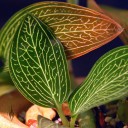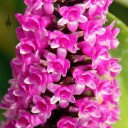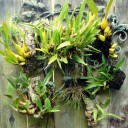More Winter Orchid Exhibits
Posted January 26th, 2013 by Marc CohenCategories: Botanical Gardens, Events
One surefire way to cure winter’s cold is to stroll through a tropical rainforest. Warm up at a winter orchid exhibit in the list below or this earlier post.
January 26 – April 21
At the National Museum of Natural History in Washington DC, the venerable Smithsonian features “Orchids of Latin America.” The exhibit looks at orchids in Latin American culture, scientific research, and conservation efforts. Start your tour online with these great photos of a few Smithsonian gems.
February 2 – March 31
In St. Louis, one of the country’s largest orchid collections displays its best at the Missouri Botanical Garden. This year’s show promises to transport visitors to the rainforests of Madagascar.
February 9 – April 14
The Atlanta Botanical Garden delights with Orchid Daze: Surreal Beauty. Whimsical exhibits include orchids with mirrors and as artistic compositions.
February 9 – March 16
In Evansville, Indiana, the Mesker Park Zoo & Botanic Garden offers an Orchid Escape. Orchids adorn the indoor Amazonia rainforest exhibit. Admission is included in the price of a regular zoo ticket.


























